The power is out. Homes and roads are flooded. In Puerto Rico, Hurricane Fiona leaves a 'nightmare.'
Luciano Bozzolo's truck raced toward Puerto Rico's mountainous interior. He was on a mission to deliver generators, food, water and other vital supplies to areas ravaged by Hurricane Fiona.
"We had a friend call asking for help," Bozzolo, 43, told USA TODAY by phone as he drove Tuesday.
The San Juan resident, whose own 17th-floor apartment still lacks power, water and working elevators, said he'd already seen widespread landslides, damaged homes and downed powerlines caused by torrential rains and floods.
He'd gotten word that the road to the nearby town of Utuado, once blocked by storm debris, was now passable.
Exactly five years after Hurricane Maria's high winds devastated the island, killing thousands and plunging millions into months of darkness, Puerto Ricans found themselves rescuing vulnerable residents, repairing homes and checking in on neighbors in the wake of yet another major storm.
"It's been a nightmare," said Rafael Joglar, 68, a biology professor based in San Juan. "Five years ago, we were hit by Hurricane Maria, so it's kind of a very strange, weird sensation going now again through this."
HOW CAN I HELP PUERTO RICO? Mutual aid, nonprofits to support after Fiona
5 YEARS AFTER MARIA: Puerto Ricans are still struggling. Then came Fiona.
Fiona, a Category 1 hurricane at the time, dropped between 6 to 20 inches of rain across Puerto Rico and the U.S. Virgin Islands from Friday morning through Tuesday afternoon, with up to 30 inches in some parts of Puerto Rico, Steve Goldstein, the NOAA liaison to FEMA, said in a press conference.
Many rivers rose out of their banks and washed out bridges, and there were some rock and mudslides, Goldstein said. Lingering showers posed threats of additional flooding and slides, he said.
"While some of the rivers did approach levels that were observed during Hurricane Maria in 2017, none of them exceeded those record levels," Goldstein said.
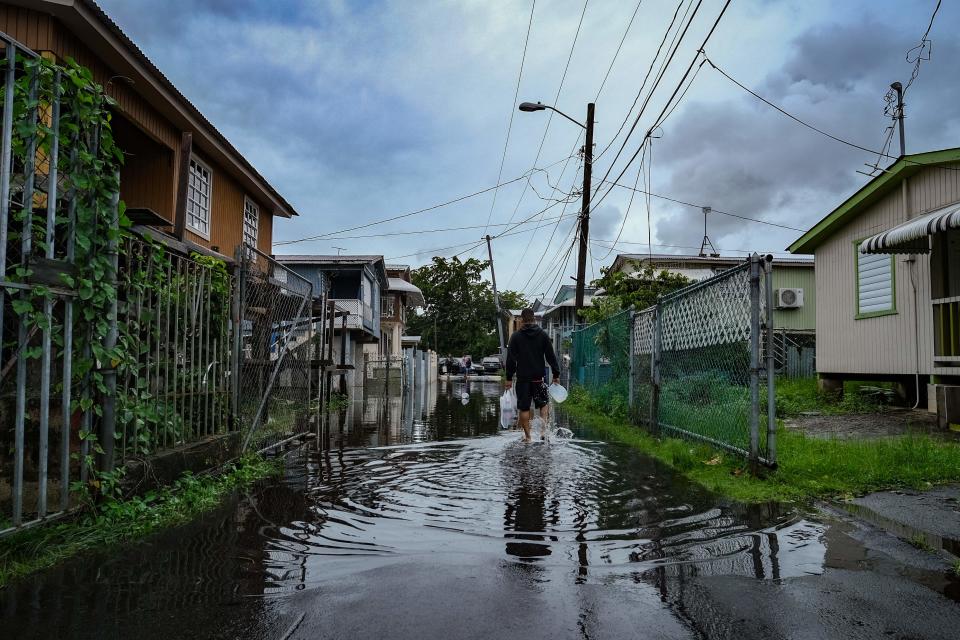
At least four people have died and more than a million customers – about 80% of the island – are without power, said Keith Turi, FEMA assistant administrator for recovery. A "few hundred" responders are on the ground, and FEMA will be sending "hundreds" more employees, he said. Impact assessments are ongoing.
"We are still very much in a response phase and a life safety phase," Turi said.
In the central Puerto Rico town of Cayey, National Guardsmen rescued 35 nursing home residents Monday from a building that threatened to collapse from a landslide, Lt. Col. Josue Flores told USA TODAY. They scrambled over the mud to gather the patients, their belongings, medical equipment and beds to move them to a shelter, he said.
"We were telling them, 'We're taking you to a safe zone. We will make sure that you're safe,'" Flores said.
HURRICANE FIONA FLOODS HOMES, STREETS IN PUERTO RICO: See the people and places impacted
During the height of the storm, Flores said Guard members rescued nearly 1,000 residents near Salinas on the southern coast from flooded homes and neighborhoods.
Elsewhere, they delivered food and supplies to a community that had been cut off by a damaged bridge.
By Tuesday, Flores said rescues in his command areas were on the decline. He said crews were working to clear roads to allow aid and families through, and for utility workers to restore electricity.
"The good thing is the community – all the neighbors – they get together and they pick up axes, they pick up chainsaws, and they start clearing," he said.
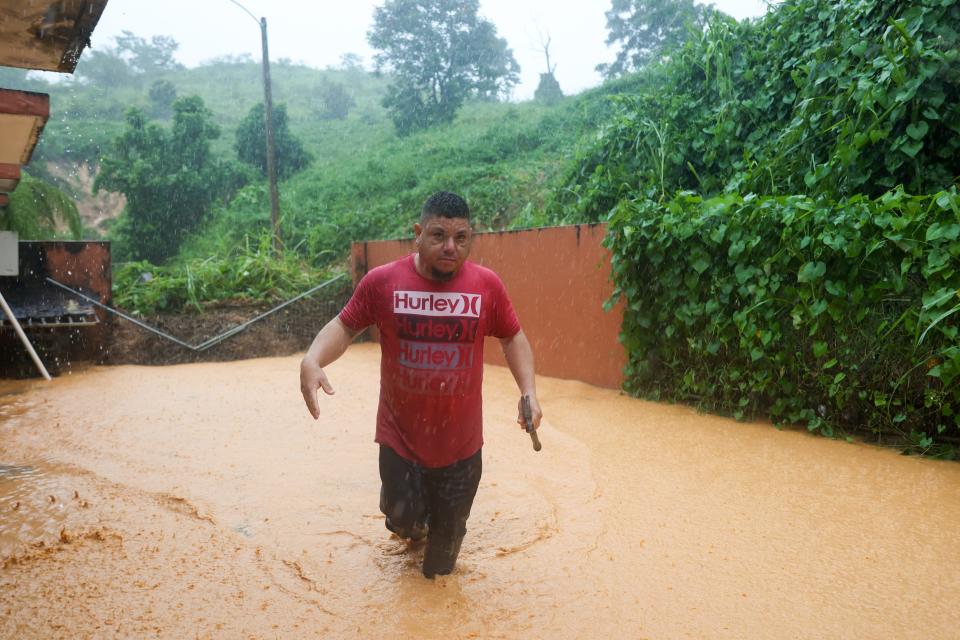
Ana Navarro, 58, said she and her daughter in San Germán, on the southwestern part of the island, spent Tuesday cleaning water out of their home and removing fallen trees from their backyard.
They endured 16 hours of hurricane winds and heavy rain by reading books and playing with their cats, the two told USA TODAY on the phone.
"It was very terrifying because we remember Maria," said Navarro, a researcher who specializes in water conservation.
The family spent three months without water and seven without electricity in the wake of Maria, said Navarro's daughter, Ana Beatriz Sepúlveda, 26. But while Maria struck hard and fast as a Category 4 hurricane with sustained winds of 155 mph, Fiona passed slowly over the island, dumping rain for hours on end, Navarro said.
The mother and daughter said they emerged from their home Monday to discover landslides and abandoned animals roaming the streets. They're now sheltering a dog and two cats in a bedroom. The concrete home withstood Fiona's winds, but water still seeped through the windows and leaks in the roof, Navarro said.
'WE'LL BE FOREIGNERS IN OUR OWN LAND': Bad Bunny debuts 'El Apagón' music video amid Hurricane Fiona, addressing Puerto Rico's gentrification
Without water or electricity, Sepúlveda said she and her mother have been relying on their cistern – common in households since Maria, she said.
"Now, I think everybody has a generator and everyone has a cistern because we know we need to be prepared," Sepúlveda said. "You cannot wait for the government to help you out. You needed to be prepared on your own. And that's exactly what we did."
In advance of Fiona, Navarro stocked up on food and emergency supplies, she said. Tuesday morning, she gave some of her supplies to her 74-year-old neighbor. She's particularly concerned about the large elderly population in her community.
"I don't know where FEMA funds go, but here in our communities people have to take care of themselves," Navarro said. "This is the situation all the time with these emergencies in Puerto Rico."
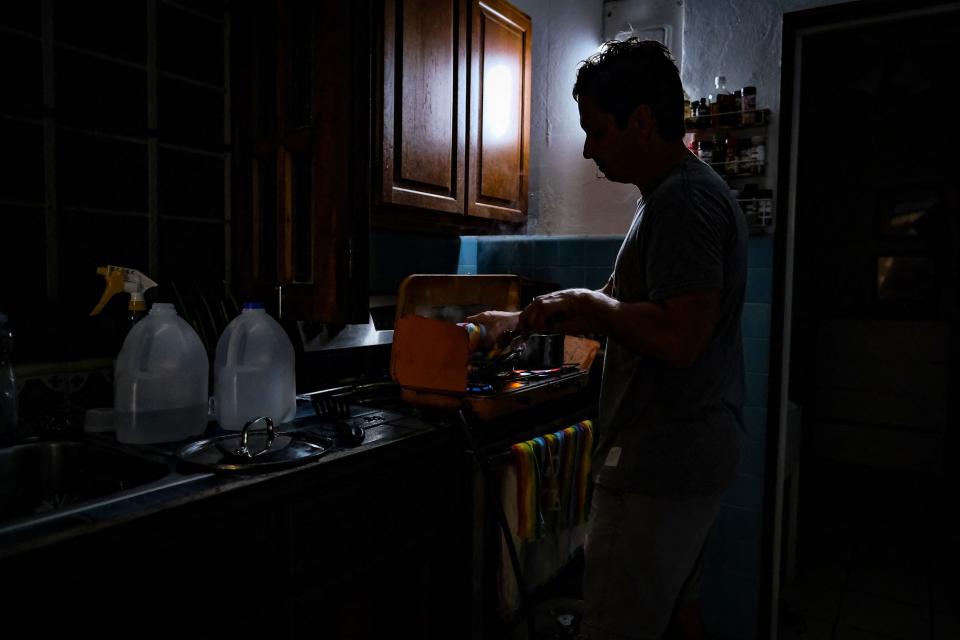
Alberto Serrano, 36, speaking to USA TODAY on Tuesday from Pastillo, a coastal town east of the southern city of Ponce, said he and his relatives weathered Fiona in a family home damaged during Maria.
Serrano, who was born in Puerto Rico and now works in Connecticut as a mechanic, was visiting the island with his wife. Amid torrential rains and wind, they lost electricity – wading through knee-deep water to a relative's home for propane, batteries and candles.
After crashing waves flooded the first floor, where his sister lives, they holed up on the second floor. The family played dominoes to wait out the howling winds.
"It was roaring," he said.
The next day, they found damaged concrete, windows, uprooted trees and scattered debris – but no one was seriously hurt. Neighbors helped each other clean up. Serrano found a downed tree and washed up some plantains. He marveled at the resilience of local residents.
"It's amazing how everybody just goes about their business. Like, just shake it loose and just keep moving forward," he said.
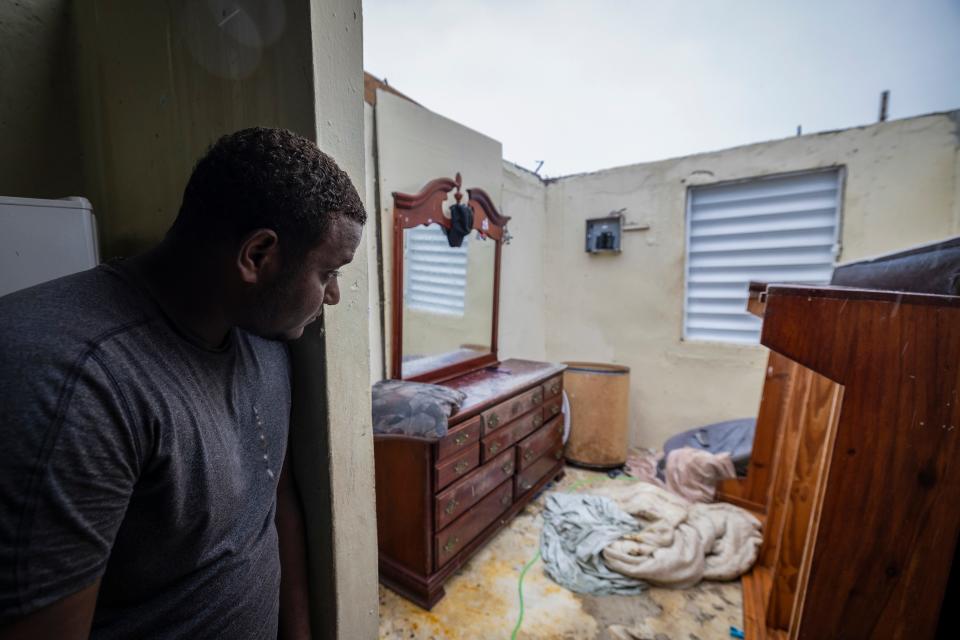
In Puerto Rico's capital city, when the rain stopped Tuesday afternoon for the first time in days, Joglar left his ground-floor apartment, went into his damaged garden and started cutting down branches.
"We have suffered so much," he told USA TODAY as he sat in his car, charging his cellphone.
Joglar, like many Puerto Ricans, is exasperated by the island's constant power outages in recent years. He said the electricity in his apartment goes off at least once a day. He's had to buy new refrigerators and microwaves – at least three in the past two years –because the appliances are damaged by the frequent outages, he said.
As a professor teaching remotely during the COVID-19 pandemic, Joglar was constantly stressed the electricity would go out and interrupt his classes, he said.
"Congress promises a lot of help and a lot of money and a lot of different things to rebuild our island, but none of that is here. Five years from the last hurricane, nothing has happened. Our roads are destroyed. Our hospitals are in bad shape," he said. "We are kind of second-class U.S. citizens."
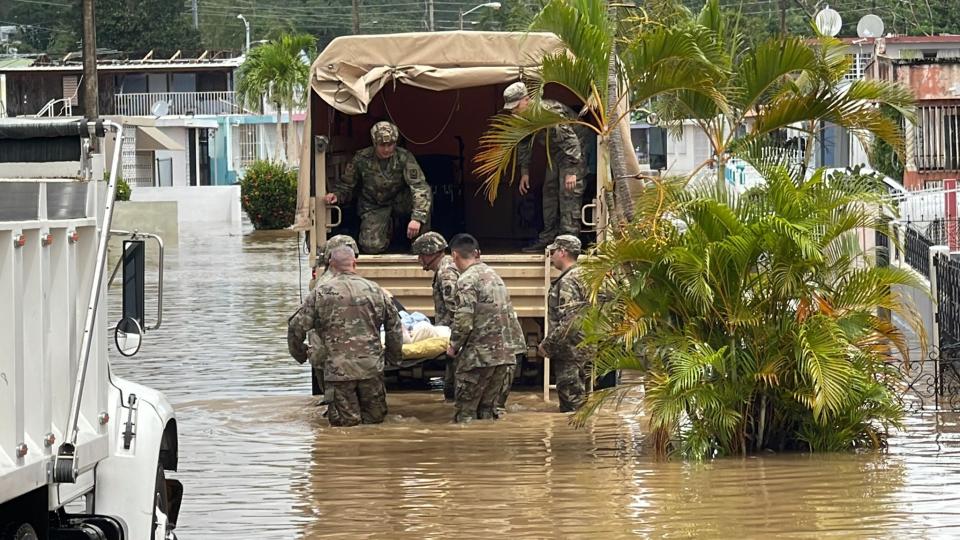
When Fiona struck, Joglar said he was initially able to check in with close family to make sure they were safe. Then his cellphone died. So he stayed inside and read several children’s books – including two about Hurricane Maria, he said.
It was on Monday night that he went to his sister's house and saw images on TV for the first time of Fiona's aftermath in other parts of the island. He said he had never seen that level of flooding.
"Five years ago, our island was completely destroyed by Hurricane Maria. And the question is, have we learned anything? Have we recovered?" he said. "It's obvious – no. We have not recovered. We haven't learned almost anything."
Email Chris Kenning and Grace Hauck or reach them on Twitter at @chris_kenning and @grace_hauck.
This article originally appeared on USA TODAY: Puerto Rico wakes to another 'nightmare' after Hurricane Fiona

